Paul Kent: Why the Tigers might have got it wrong with Mitch Moses
Million dollar NRL deals used to be reserved for proven winners, but the Mitch Moses contract saga shows even the cheapest player will be worth a million bucks one day, writes Paul Kent.
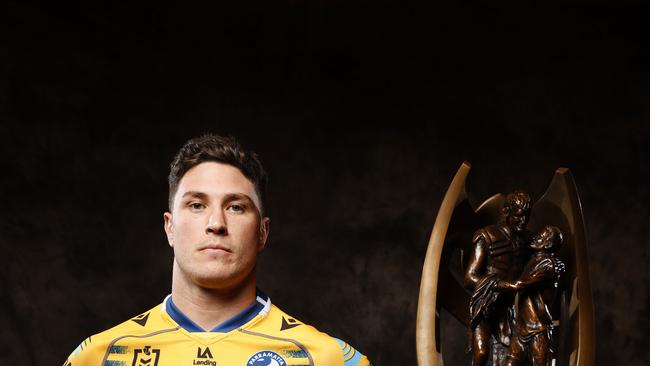
NRL
Don't miss out on the headlines from NRL. Followed categories will be added to My News.
Footy players are like Sydney houses; even the cheapest will be worth a million dollars one day.
While still to be officially stamped, news broke this week that Parramatta’s Mitch Moses calmly knocked back Wests Tigers’ offer of $1.4 million a year to stay at the Eels for somewhere around $1.25 million a season.
No deal has been signed yet, although that’s the way it is heading.
Moses wants a five-year deal and Parramatta is offering only four. The Tigers have already agreed to give him five.
Either way Moses won’t exactly be licking the dates off the calendar to feed himself, so no need for sad songs, but if he stays with Parramatta, as most believe, he will still take a considerable pay cut to remain loyal to Parramatta.
The true question is not whether Moses would be making the right decision to stay with Parramatta, but whether the Tigers’ deal was actually worth tabling.
For the Tigers, not Moses.
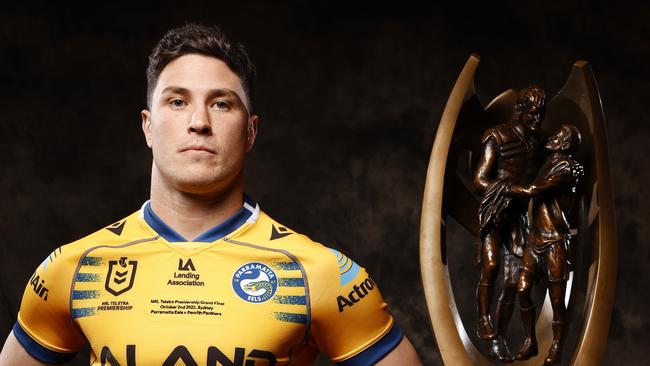
A great majority of successful club operators believe a million dollar-plus player is worth it only if he can deliver a premiership.
If a club isn’t in position to do that then it could be fair to say its problems probably lay beyond the presence of a star player to bring the final polish to the squad.
What did the Tigers believe Moses would deliver for that kind of money?
His impact would be immediate, no doubt. Straight away the Tigers would be better.
But is he that final piece in a premiership roster? Or worth that much money to get them to the finals for the first time in 11 years? Or is it merely part of the gradual rebuild that has begun?
Short of that, some would argue, the money might be better spent spread across the roster to build overall strength and drive the club to a position where it would be appealing for players to play.
The Tigers, instead, are offering overs to entice him.
Looks like Moses might prove too smart.
He is 28 and if he isn’t already there, he can at least see each contract period is now at a stage where it could be his last, which explains the stall over the five-year term. That’s significant for a man still searching for his first premiership.
The Tigers finished bottom of the ladder last season, so the work is all ahead, which Moses clearly recognises.
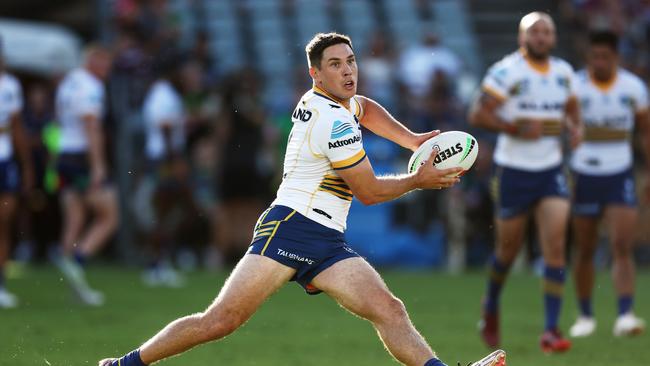
Who is worth a million dollars in the NRL nowadays?
Starting at the top, Nathan Cleary, at Penrith, is worth every dollar of his $1.2 million-plus contract and perhaps a little more.
He wins big games, can turn around losing games, and has led the Panthers to the past two premierships.
Cleary is the only player at Penrith on the seven-figure salary.
It shows not only how astute the Panthers are but how disciplined they are in negotiations. Maintaining that discipline has meant losing four Origin players from their past two grand final teams, as well as several other quality players, yet they have the money there when they must use it.
The trick with the big contracts is exactly the same as the trick with the small contracts, except a little bit more.
It is all about value for money. Successful clubs value the market correctly and don’t break discipline to keep a player when bigger offers roll in.
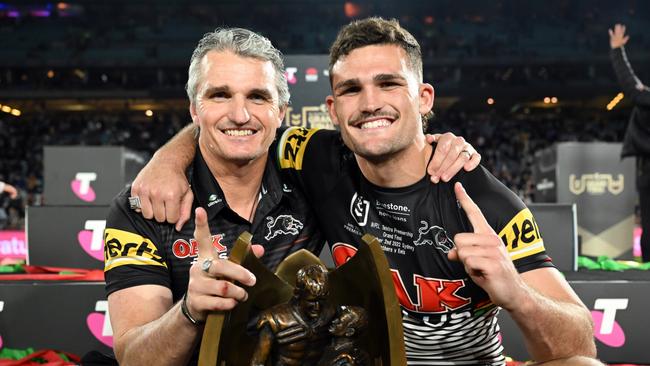
Another part of the transaction is some players are worth more at some clubs than they are at others, depending on needs and wants, which is where the confusion starts.
The Panthers simply wished some of their men the best and let them go.
It is no point paying even $500,000 for a player these days if he can deliver only about $400,000 worth of value to the performance.
Pay $500,000 for a player who delivers $600,000 value, though, and the cap is looking healthy.
The margin for error gets smaller with the more a player is paid.
Cameron Munster is Melbourne’s million dollar-plus player and he delivers because he can be the sole difference between a win and a loss. With Harry Grant also close to a million, the Storm’s cap payments are spot on.
Latrell Mitchell is a similar matchwinner for Souths. James Tedesco has consistently been the Roosters’ best performer and backs up his top salary with premiership wins.
Jack Wighton brings to Canberra what the Raiders want from him as they believe Joe Tapine will, their next highest-paid player on just under a million dollars.
There aren’t that many around the NRL.
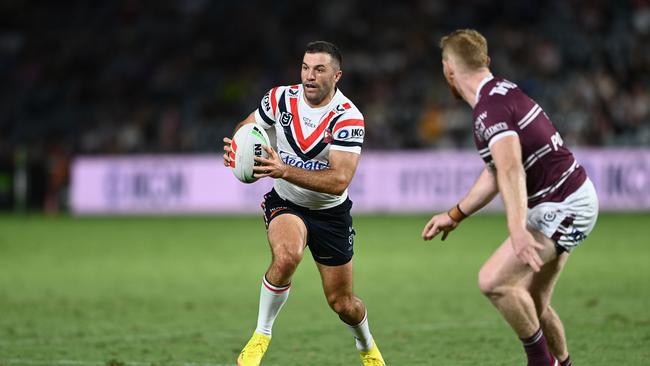
It’s understood the Tigers, Warriors, Cronulla, Canterbury and Redcliffe don’t have a million dollar player on their roster, although some on their roster are close.
The Dolphins went in hard for several players but, ultimately, maintained the discipline to keep the money in their carp rather than spend it on a player who won’t provide the required value for money.
Kalyn Ponga owns perhaps the richest contract in rugby league.
Ponga’s contract contained a ratchet clause which means once the NRL formally stamps the new Collective Bargaining Agreement his contract will jump up to $1.5 million a year, and some say over.
That will be more than 10 per cent of the salary cap in one player at a club light on depth.
Is it value for money?
You could argue no, with some commitment.
The Knights finished 14th last season. Are they a realistic chance for the title this season?
Investing too much into one player, no matter how talented he is, can stifle progress.
When Daly Cherry-Evans backflipped on the Gold Coast to stay at Manly in 2015 it was on the strength of what was then an extraordinary eight-year deal, unprecedented at the time, with a contract that was tied to a percentage of the salary cap.
Every time the cap went up, Cherry-Evans’ salary also went up. Cherry-Evans was the first million-dollar player in the game.
This is Cherry-Evans’ final year under the terms of that contract and he has been a tremendous player for the club throughout.
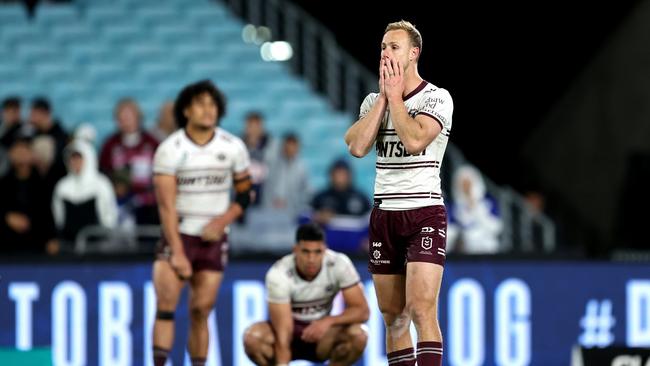
He was the club’s statesman, the clear leader. He brought value off the field as much as he brought on it.
In pure terms of results, though, you could question whether the deal worked.
In the first seven years of the deal Manly has finished 13th, sixth (out in the first week of the playoffs), 15th, sixth (out second week), 13th, fourth (preliminary final) and 11th.
Six finals games in seven years.
Of course, all these figures will soon be irrelevant under the new cap.
Like houses in Parramatta, the million dollar mark will pass from the benchmark to being the new normal as the cap goes from $9.6 million last year to $12.1 million this season, and who knows where next.
Premierships, though, remain timeless. They only give one a year.
SHORT SHOT
Angus Crichton is our reminder of the frailties in strong men, and everyone around the game is hoping for his recovery.
It’s been a tough week for everybody involved in the game in that regard.
The frightening part to news that Crichton is in hospital, among many, anyway, is how short a time ago he was at what most would consider the peak of the game, winning a World Cup final as part of the Australian team.
It was the childhood dream.
Yet three months later he was checked into a health facility and diagnosed with bipolar disorder.

It has sent a scare through the rugby league community. Mental health, and all its complications and all its inconsistencies, almost all individually different, has reared its ugly head in rugby league too often lately.
Many are still devastated at Paul Green’s death last year.
As usual, the rugby league grapevine has been red hot after the news of Crichton’s suffering and, as usual, most of the whispers around the game have been untrue.
As one rival chief executive said yesterday, “It’s an easy guess.”
But even easy guesses can miss the mark.





